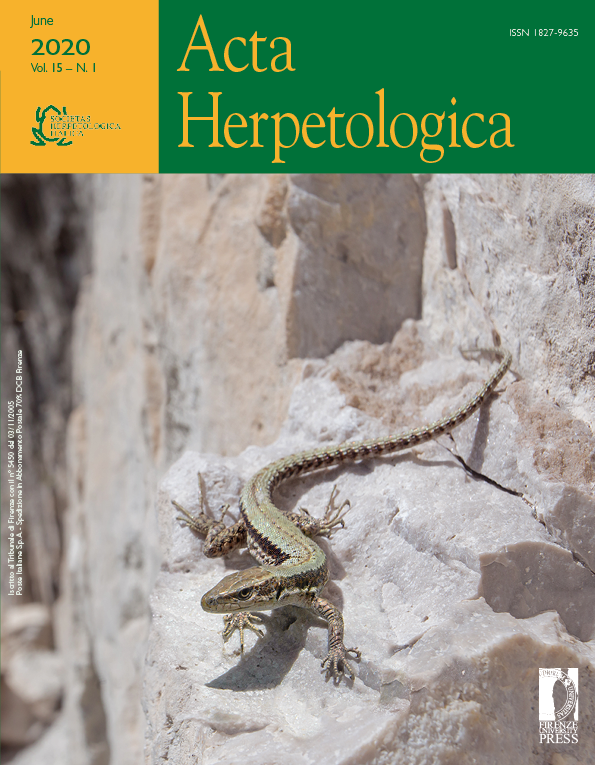Effects of temperature and food level on plasticity of metamorphic traits in Bufo gargarizans gargarizans larvae
Published 2020-05-17
Keywords
- Amphibia,
- Anura,
- Bufonidae,
- Bufo gargarizans gargarizans,
- larval period
- metamorphic size,
- phenotypic plasticity,
- China ...More
How to Cite
Abstract
Many environmental factors such as temperature or food level may influence growth and mortality risks of ectothermic vertebrates in both aquatic and terrestrial habitats. In this study, plasticity in growth rates, survival, larval period, and size at metamorphosis were examined in Bufo gargarizans gargarizans larvae under different combinations of temperature and food level. Our results showed that larvae metamorphosed at an older age when reared at 17.3°C. A significant interaction between food level and temperature revealed that the food level has obviously affected length of larval period when tadpoles raised at 17.3 °C, but not at 27.3 or 31.3 °C. Also, we found clear evidence that growth rates are influenced by both temperature and food level. Interestingly, tadpoles reared at 17.3 °C had larger size at metamorphosis than those reared at other temperatures, suggesting that B. g. gargarizans larvae reared at cold temperatures have a longer developmental period but they are also larger as metamorphs than conspecifics reared at warmer temperatures. Therefore, the global climate change or local manipulations of the environment may promote growth and development of B. g. gargarizans larvae, but not large size at metamorphosis.






